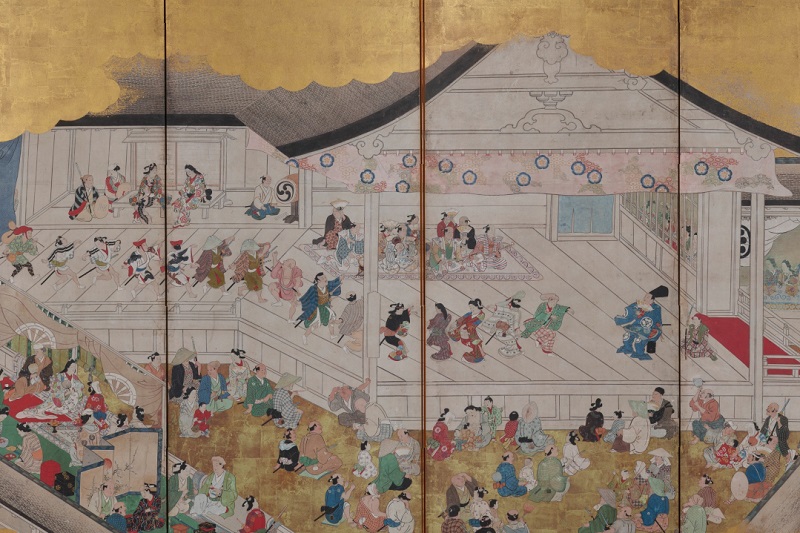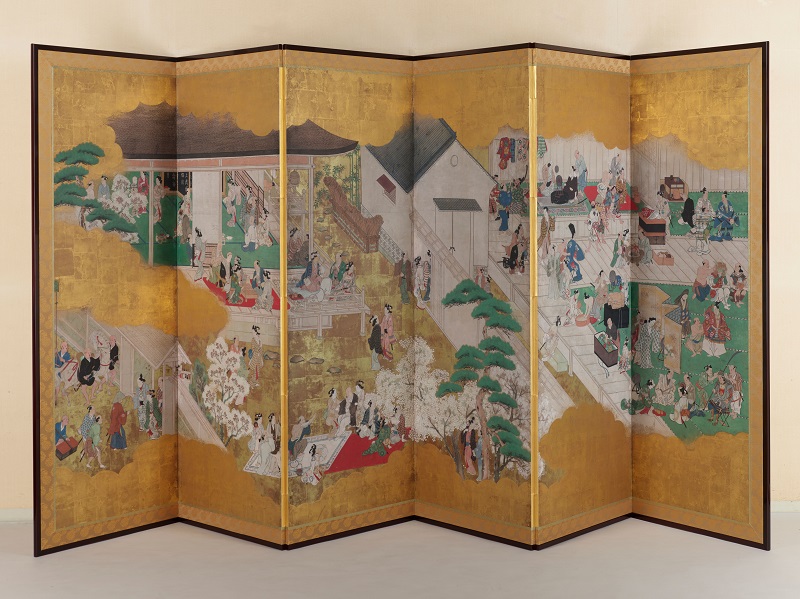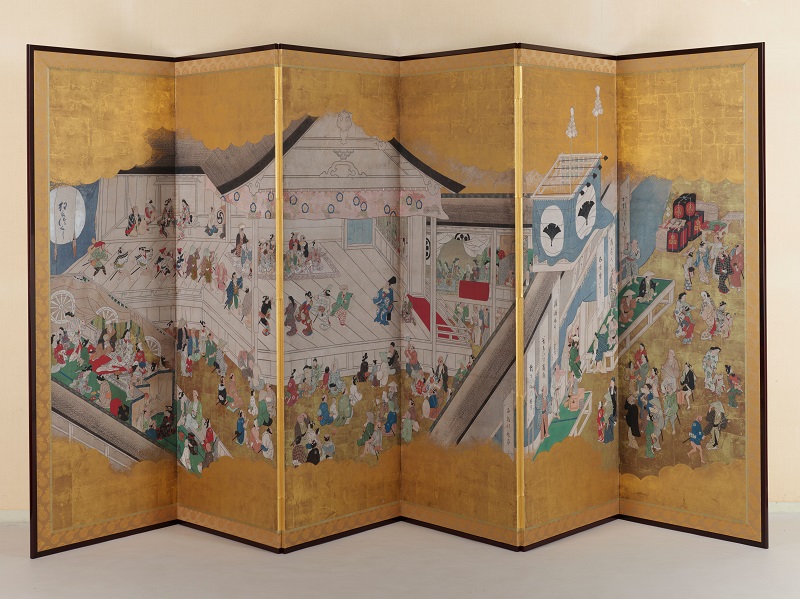複製品詳細
| 名称 | 歌舞伎図屏風 |
|---|---|
| ふりがな | かぶきずびょうぶ |
| 員数 | 6曲1双 |
| 複製材質等 | 和紙に印刷・金箔 |
| 複製制作年 | 2019 |
| 複製法量 | 各170.0×397.6 |
| 複製制作 | 綴プロジェクト |
原品詳細
| 指定 | 重要文化財 |
|---|---|
| 作者出土地等 | 菱川師宣筆 |
| 原品所蔵者 | 東京国立博物館 |
| 原品材質等 | 紙本金地着色 |
| 原品時代・世紀 | 江戸時代・17世紀 |
| 原品機関管理番号 | A-11084(複A-11084-1) |
作品解説
右に芝居小屋「中村座」の入口と、役者総出の太平楽の華やかな舞台と観客席、左に楽屋とこれに繋がる茶屋が緻密な描写と構成によって、臨場感をもって表現されている。285人のさまざまな人々の姿が、活き活きと描き込まれた師宣最晩年の代表作である。 ―ColBase 国立博物館所蔵品統合検索システムより




